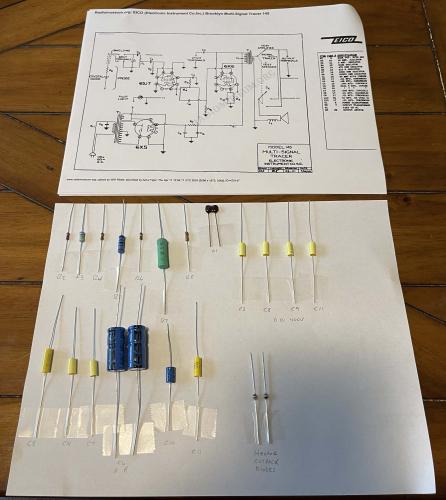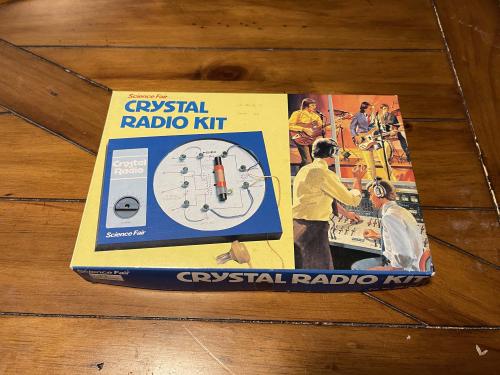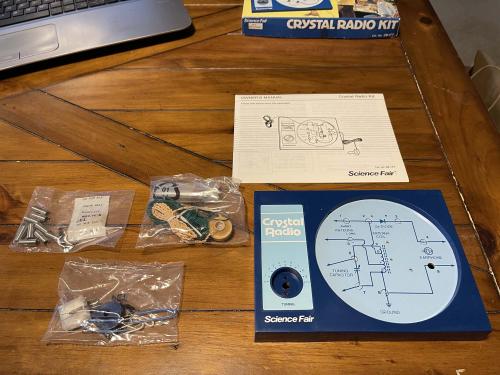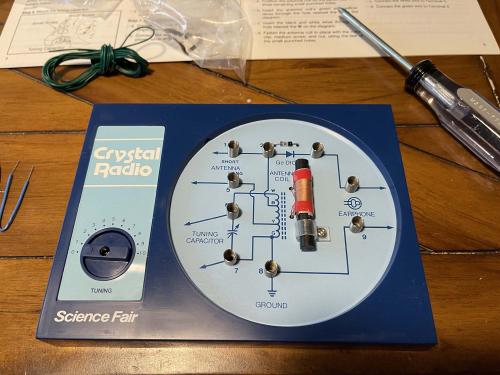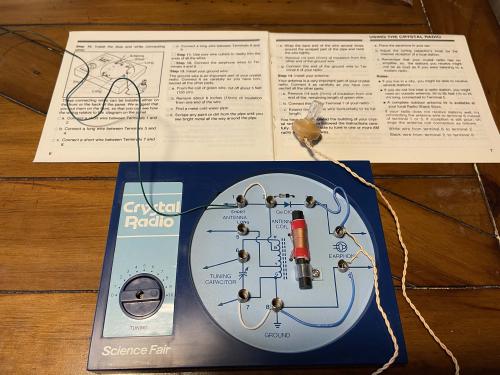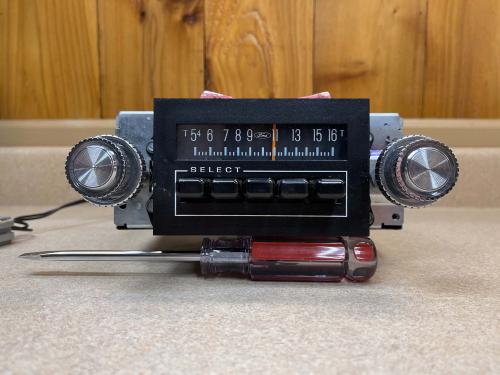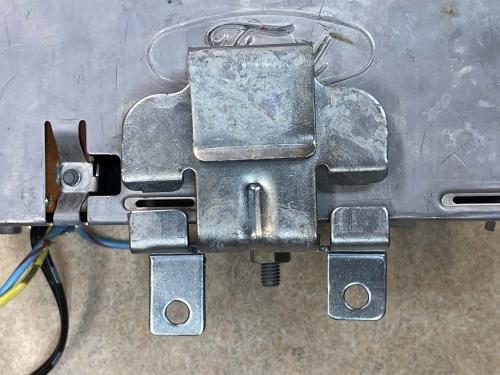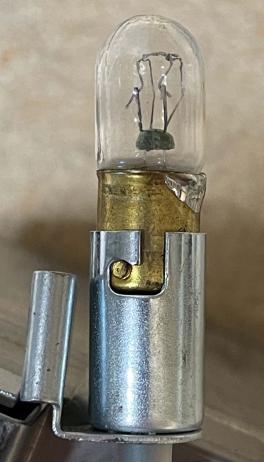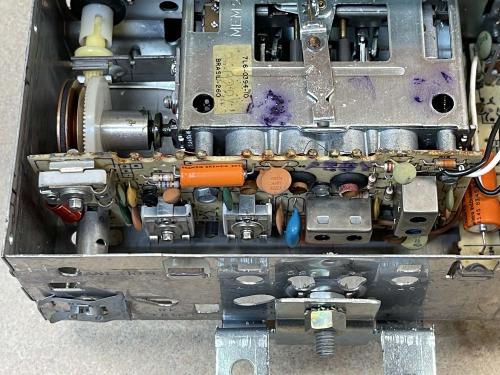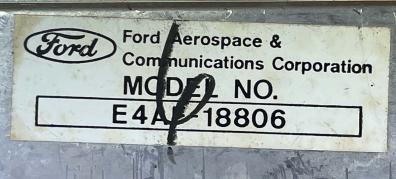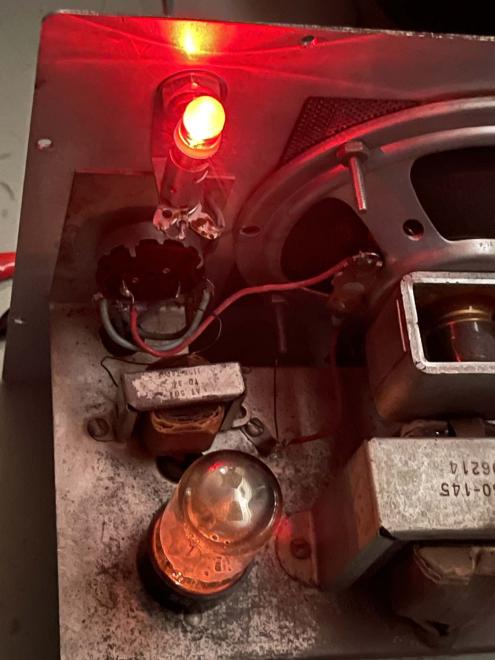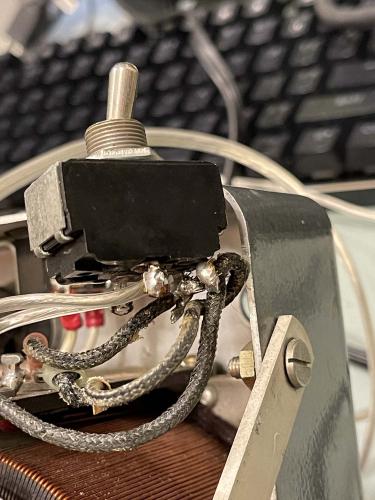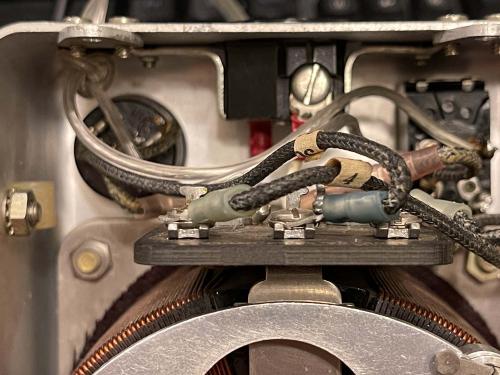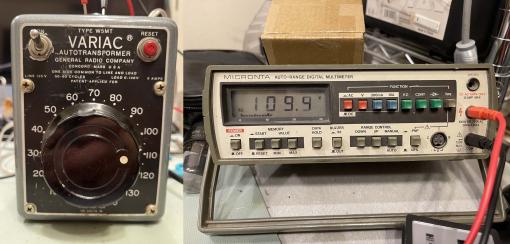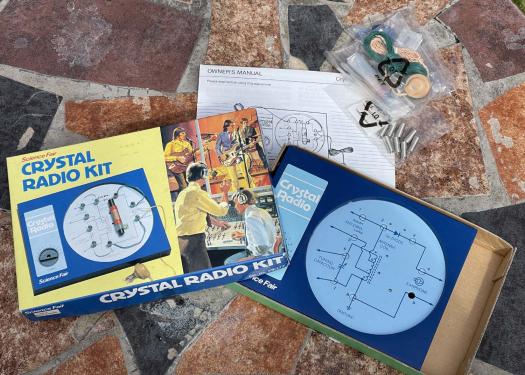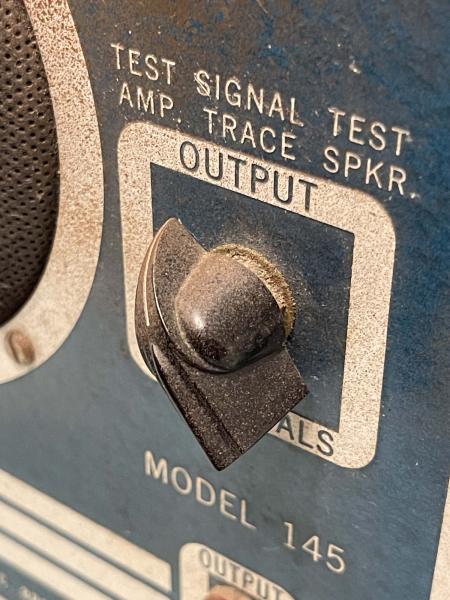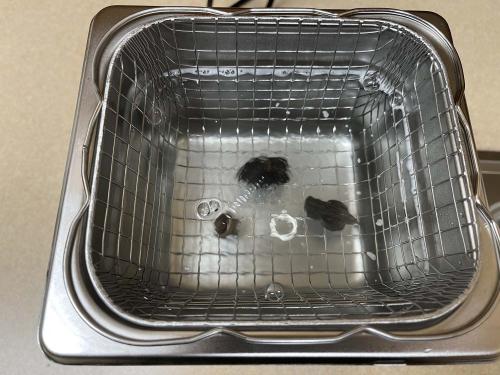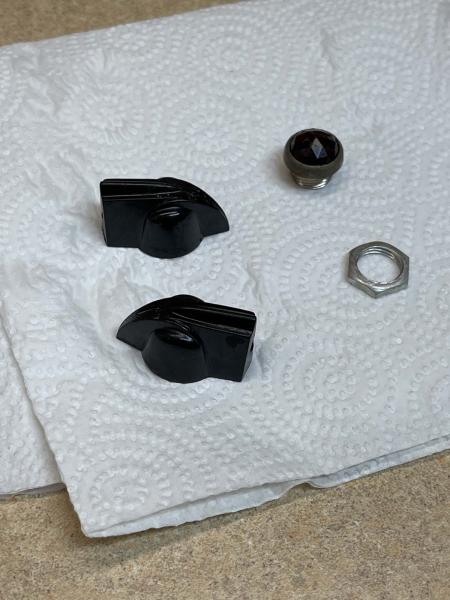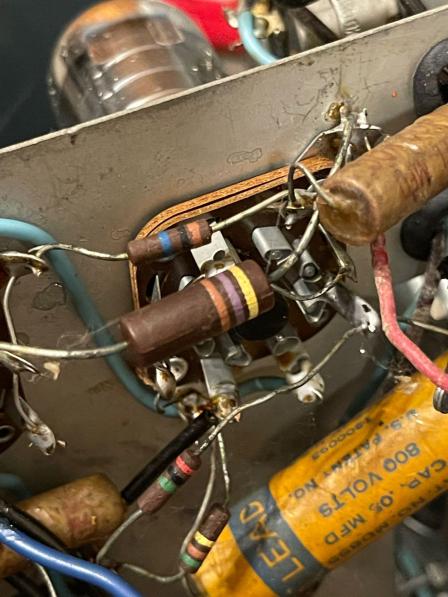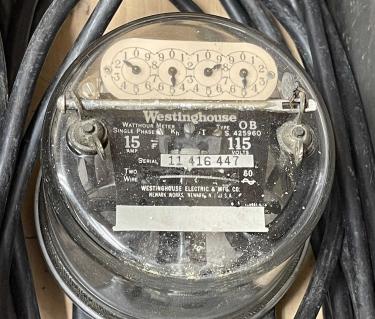- 2024
- Apr
- 21
An Eico 145 Signal Tracer - Part 3
Now that I’ve verified that the unit works, it’s time to get it ready for rebuild - that means ordering parts.
I’ve created a list of parts to order. I’ve stayed with carbon film resistors, or metal film if they were more reasonable - carbon film seems to be fading in availability. I did make two changes - one is the cathode resistor for the 6K6 output tube, the other is the power supply divider.
From everything I’ve read, the 6K6 was run a little hotter than than it should have been, and a 1K (versus the original 470 ohm) has been used to cut down on the output power. We’re not really concerned with power output here, this is a signal tracer - not a stereo amp. This should help any new output tube used stay useful longer.
It’s still a 2W resistor, metal film instead of the original carbon comp. The bypass capacitor has also been re-added, as it appears to have never been installed.
The second change is the power supply divider resistor. This has been increased to a 7W resistor with a voltage rating high enough to withstand the power supply voltage. You’ll notice in the original pictures, this was a long carbon comp resistor. While power is a concern here, the the voltage rating of the resistor is the main concern. 300V in a power supply could arc across a short carbon comp resistor, To increase the voltage rating, they were simply made longer to give you more space between input and output.
Now, that’s not a problem (as much,) but you still need to be mindful of the voltage rating of the part. In this case, I’ve chosen 500V. This, and the power rating far exceed what’s needed. However - it’s wirewound instead of comp. Inductance in the circuit could change the output voltage a little. Not that we really care, but it’s something to watch out for. I certainly wouldn’t do this in the audio part of the circuit.
All capacitors are as close to the values as you can get in a modern part. 0.01s are readily available. 0.05 is now 0.047, 0.002 is now 0.0022. All are 400V, except for the across-the-line capacitor, which I chose 630V for. The 50pF mica is probably fine, but a new one was purchased just in case.
Electrolytics, of course, have to go. 8uF are now 10uF. This is both someplace you don’t want to scrimp on, but you don’t want to go crazy with. You don’t need transistor device filtering here, so always stay around the original value. With 8uF, you could use 10, 15, 22…no issues. Don’t start sticking 100, 1000, or more in there - you don’t need it, you run the risk of drawing too much current off the tube as the capacitor charges, and you’ll spend a fortune getting parts with that high of a capacitance and a voltage rating.
There are two schools of thought here on voltage rating for capacitors. One states that higher is better, the other states going far higher than your expected voltage will eventually destroy the part as they can’t stay formed properly. I can’t speak for either, but I was always taught give yourself some headroom but don’t go wild - so that’s what I did here for the electrolytics. I expect 300V max, I went with 450WVDC.
In all, I spent about $48 on parts. Most of that is the electrolytics and the higher power resistors. I could have cut that back some, but I always like to order a few extra parts. It’s not like they won’t get used later.
There’s one other modification I’m going to make here, and that’s the addition of a couple of diodes in the heater line for the tubes. These units were designed to run on 110VAC, not the common 125VAC we get today. That means you get about 7.1VAC on the heaters - far in excess of their rated 6.3VAC. Two diodes, back to back, should cut about 0.6V off, bringing you to a much better 6.5VAC. Still high, but it’s not going to destroy the heaters as quickly. If you really want to be ideal with the thing, a variac to bring input voltage down is the best option - but if you’re going to have this in places that aren’t your bench, the diodes are a good option. I chose 200V, 2A 1N5059 units here - mostly because they were inexpensive and about 2x rated current, and somewhat because these round glass body diodes look kind of cool. They’ll go on a phenolic terminal strip.
Next step was to inventory everything and compare it to the schematic and parts list. There’s not a lot here, but I seem to have everything I need save for the bits I’m going to get from stock at the bench.
Next step is rebuilding…do I want to just yank everything and replace it all at once or do it part by part? It’s probably best to do it the latter way, but doing it the former way allows you to clean up everything and make it look nice. I’ll think about that for a while.
Until then, stay tuned!
Edit: I did decide to go with a nice aluminum cased resistor for the power supply divider. The one I originally chose was wirewound, that shouldn’t make a difference - but a nice resistor with a heat sink should keep this thing going for years.
Next part of this series: https://wereboar.com … ignal-tracer-part-4/
Previous part of this series: https://wereboar.com … ignal-tracer-part-2/
- 2024
- Apr
- 20
A Radio Shack 28-177 Crystal Radio Kit
This kit used to be a staple of Radio Shack’s lineup. It’s nothing more than a simple crystal radio kit with a tuning capacitor, ferrite bar antenna coil, and a 1N34 or equivalent diode on a simple plastic cased paper breadboard. The plastic chassis was reused for many things, as evidenced by the battery holder on the bottom, and the multitude of devices that were presented in the catalog.
This particular example is brand new. First thing to do is inventory all the parts, and they’re all here in 3 bags.
1 - Spring terminals and free candy.
2 - Ferrite bar, earpiece, antenna wire, and diode.
3 - Capacitor, knob, wires, and screws.
The chassis and manual complete the parts included. You’ll need a piece of wire for a ground - the manual suggests using part of the antenna wire. I had some 18ga primary wire in my toolbag, I used that for this test instead.
Assembly really only takes about 15-20 minutes. Punch out the holes for the springs, install them, then the diode, tuning capacitor and ferrite bar.
The only issue here was determining what wire on the ferrite bar’s coil went where. The color on the white and yellow wires was somewhat faded from years of storage. There was just enough left that, with some close-up examination, I was able to determine where they went.
Assembly was finished, with just the antenna, ground, and earpiece to add.
(The ground wire was connected after the picture was taken. It went right to the earth of the building I was in.)
Unfortunately, the area I was in didn’t have any strong AM stations around, so there was nothing to listen to. I was able to get some electrical noise on the earpiece, so it’s at least working. I was going to demo the device connected to a signal tracer, but that’s going to wait until I can get to a location with better signal strength.
Stay tuned!
- 2024
- Apr
- 13
This 1986 Ford Radio.
One of the things that caught my eye at the Cuyahoga Falls hamfest this past Saturday was a car radio sitting on the table by the door - the one that’s “Take what you want, pay what you want.” It’s nothing special, just an old Ford AM radio. I put some buxx in the bucket for it.
Why? I want a radio that I can put in a panel and mount in my rack, and a car radio is quite noise immune. I want to listen to a station for emergency alerts, and a car radio is a good choice, being designed for harsh service.
This one has some oddities about it, however:
It’s a radio! Yay! This one doesn’t say Philco on it. You’ll notice it doesn’t seem to have a lot of wear on the knobs and the buttons. In fact, there’s none, and even the face is nice and bright (save the dirt from storage.)
The mount doesn’t show any evidence of ever having been bolted up, either.
Even the lamp, which is in a shielded tube mounted away from the faceplate to prevent plastic burning - a well thought out thing - shows no tungsten burn off. The picture doesn’t really show it, but the brass body is just-out-of-the-box shiny.
I don’t think this was ever mounted in a vehicle. Even the socket pins look new, there’s no marks that I can see on them, and installing it even once would leave some sort of evidence. Inside is similarly clean, there’s not even any evidence of wear on the tuning assembly.
I wonder what it was for? Dealer stock from back when you could get a car without a radio if you wanted it, or perhaps a repair device that was never used?
The inside is a thing of beauty. 4 cans, 3 trimmers, and nothing other than discrete transistors.
Even the label is cool. Ford Aerospace.
So the next thing is to hook it up and try it…and I don’t have any 4 ohm speakers these days. That’s easy enough to get, I can probably pick up something at the next show, which is in a couple of weeks.
This radio seems to fit the bill for what I want to do with it, and the fact that it looks like it’s still new is quite the bonus. I’ll post results when I get it hooked up.
- 2024
- Apr
- 8
Imagine taking this 29-cent LED bulb back to 1955…
I bet there’d be a lot of questions, and who knows if you’d ever be seen again. Even if something like this had been possible at the time, how much would it have cost? Would the government blush at the amount of money necessary to buy it?
This is a cheap replacement for a not really but getting more expensive incandescent #44/#47 style bulb. Originally made for pinball machines and other amusement vending devices, these seem to work fine in other equipment. The ratio of metal to “glass” is a bit different, so the glass portion doesn’t really line up as well with the jewel in my application. However, it works well enough and hopefully takes just a bit of load off the old transformer. Maybe it will last a bit longer that way.
- 2024
- Apr
- 8
Just some minor equipment repairs - cord replacements
One of the things that I do not leave on a device, no matter the age or style, is an old line cord - curtain burners notwithstanding, those are a special case.
This is the cord for my small variac.
While it’s not totally crispy, it’s showing it’s age - and since it just goes in the hole it’s probably a replacement anyway.
It’s just soldered to the switch, so the new one goes in easily. The other connections? Eh…I’ll clean those up at some point, but I need the device working now.
A grommet, an underwriter’s knot, and a blurry photo of the actual business end of the unit and we’re ready to go back together. The cord has some slack, and the knot should keep it from pulling out - unlike the older cord which just laid there.
- 2024
- Apr
- 7
Remember these things?
The Radio Shack crystal radio kit - a tuning capacitor, ferrite antenna bar, and a 1N34A diode on a little breadboard device that was reused for many different things - including an AM transmitter kit. These generally ran $10 for years, and this appears to be a later unit made in China.
I had one of these when I was a kid, but didn’t really appreciate it. Now I do, so I found one on an auction site and plan on building it. I’ll scan and post the manual as well, so stay tuned!
I would like to find out what the bar antenna is, and if they’re still available. They seem to have a million uses.
If you’d like a manual scan, you can download it here. It’s about 1MB, and is a 600DPI PDF: https://privateemail … 8376/1/8/NDY/NDYvMTY
- 2024
- Apr
- 7
An Eico 145 Signal Tracer - Part 2
It’s not really important to operation, but having clean knobs and lenses on indicators is always nice. Since I have an ultrasonic bath, I’m going to use it.
The knobs on this guy are pretty cruddy, and the power indicator has a spritz of bronze paint across it.
While I’m removing the knobs from the volume and function selector, they get a shot of deoxit to clean and lube them.
Everything goes in the bath for 20 minutes.
In the end, they all come out nice and clean and ready to re-install!
Parts have been ordered, we’ll go through those next.
Next part of this series: https://wereboar.com … ignal-tracer-part-3/
Previous part of this series: https://wereboar.com … ignal-tracer-part-1/
- 2024
- Mar
- 28
By the power of the sun!
Remember these things? One of these kits (the 160-in-1 to be exact, which I still have) got me into electronics.
This one is a kit that I always wanted to get, but it never seemed to be available when I had the money. This particular example came from a popular auction site, new in box - even the crappy earphone is there! And yes, I plan on sitting down with it and building a few of the things in it.
It’s kind of a shame that stuff like this isn’t as easily accessible as it once was. Certainly, parts, microcontrollers, and other electronics are far easier to find - but this guided, all the parts are there all the time, no extra stuff save some wire needed kits don’t seem to be around these days. Perhaps the limited use doesn’t appeal to people like it did then?
Regardless, I didn’t necessarily know what the parts were doing, or why, but I knew I wanted to know more.
I salute you, humble kit of parts. You were (and still are) a wonder in a small box.
- 2024
- Mar
- 17
An Eico 145 Signal Tracer - Part 0
I sat down with an Eico 145 Signal tracer this weekend, evaluating what it would need to put it back into daily service. The answer? Pretty much everything. Leaky wax capacitors, carbon comp resistors that are 50% off of their marked value, and a few “doesn’t appear to ever have been installed” parts complete the list of this thing’s issues. It’s amazing that it’s still working, but I would bet that continued operation would destroy the tubes in short order.
The large 470Ω resistor in the foreground was of interest. A quick shout out to a friend confirmed that this was a 2W part, not a high-voltage device. This makes sense, as the resistor could potentially dissipate 600mW at maximum plate current. It’s also interesting because there’s supposed to be a 10uF bypass capacitor across that part, but it looks like it was never installed!
Right under that, of course, is the across the line capacitor. That ’splodey boi gets replaced first.
A quick trip to mouser for components is in my future.
Next part of this series: https://wereboar.com … ignal-tracer-part-1/
Previous part of this series: https://wereboar.com … o-145-signal-tracer/
- 2024
- Mar
- 12
An unusual 115VAC demand meter.
I picked this unusual device up from an antique store in rural Pennsylvania, near where the groundhog works one day a year. It’s a fairly large place and prices vary, but it’s worth a couple hours of your time if you’re into that sort of thing, see the link below.
(The place seems to only have a facebook presence, and I’m not going to post one of those dirty links here - but here is the local chamber’s page for Yoder’s Antique Mall in Punxsutawney: https://punxsutawney … 73c05f142052452104c6.)
It’s a toolbox! Yeah, right on! Well…no, unless you’re interested in old toolboxes. It’s a fairly nice example of something from when Sears used to make things worth more than the metal it was stamped from. It’s what’s inside that I was interested in.
It’s a demand meter! Yeah, right on! Well…yes, but there’s something unusual about this one. It’s a 2-wire, 115VAC unit. While this is similar to what you would have on your house (or would have had before the electronic switchover,) those are usually wired for 230VAC instead.
This one appears to have been meant for sub-branch metering at some point, as evidenced by the easy-to-remove wiring compartment at the bottom of the meter’s housing. Whomever had this before me took advantage of that in that they wired a plug and outlet in line with the device - perhaps as a jobsite meter to pay the site owner for power consumed? Not really sure here save that all of the cable is pretty stiff and in need of replacement if it was going to be used.
Overall age of the device is in question as well - it looks to be 1930s, but Westinghouse probably made these things for decades. I suppose I could try and track it down by serial number, but who knows if those records still exist?
I tried it out by hooking it to a kitchen appliance with a heating element. It works as expected.
I’d like to get it out of it’s silicone covered metal box for a good cleaning, but that’s a project for another day.

